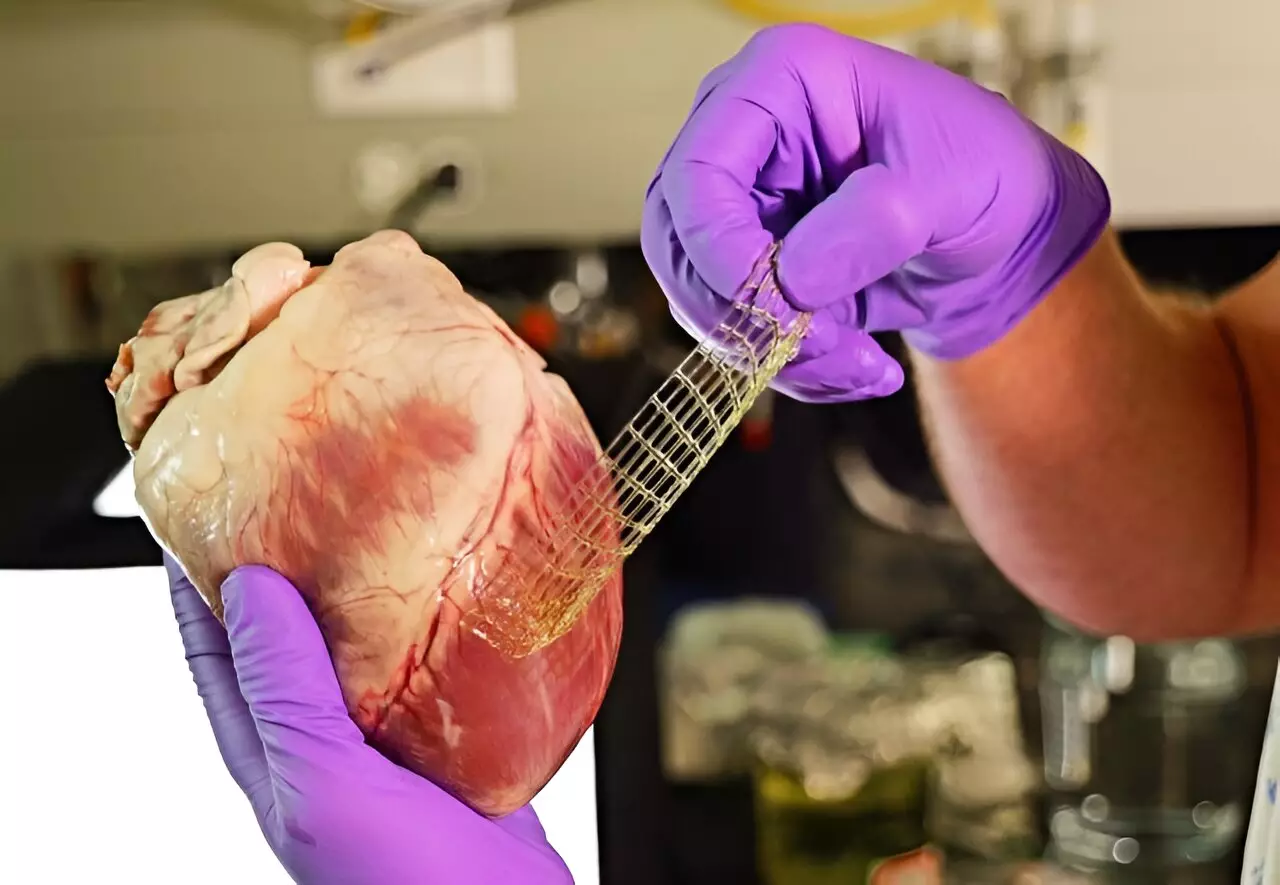In the realm of biomedical engineering, one of the greatest challenges scientists face is replicating the complexities of human tissue. Real tissues possess unique properties—strength, elasticity, varying shapes, and sizes—that are essential for their functionality. These attributes are especially critical in areas like cardiac and cartilage tissues, which have notoriously limited self-repair capabilities. Breakthroughs in creating lifelike materials have far-reaching implications, paving the way for enhanced patient treatments and innovative medical solutions.
A recent collaboration led by CU Boulder, alongside researchers from the University of Pennsylvania, has brought exhilarating advancements in this area. With an innovative approach to 3D printing, the researchers have created materials that are remarkably elastic and resilient—ideal for mimicking the dynamic environments of human organs. Their findings, published in the esteemed journal Science, highlight how this new technology holds significant promise for future medical applications, including drug delivery systems, cartilage repairs, and even the potential for needle-free surgical techniques.
Historically, the production of biomedical devices relied heavily on molding and casting techniques, which, while effective for mass production, fell short in terms of personalization. With the advent of 3D printing, a new frontier opened for tailoring medical implants to suit individual patient needs. Traditional 3D printers create objects layer by layer using a variety of materials—plastics, metals, and even biological cells—thereby enabling the formation of complex and unique structures.
Particular attention has been drawn to hydrogels—water-saturated polymers that have gained popularity for fabricating artificial tissues. Unfortunately, previous attempts at creating 3D-printed hydrogels have encountered significant hurdles. Many of these materials were prone to cracking under pressure or lacked the necessary flexibility to conform to the body’s irregular surfaces. Jason Burdick, a key figure in this research, emphasized the deficiencies of these traditional methods. The rigid materials simply couldn’t keep up with the natural movement of organs, especially in high-stress environments like the heart.
To overcome the limitations of conventional hydrogel materials, Burdick and his team sought inspiration from the natural world, particularly from the biomechanics of worms. These creatures exhibit a fascinating ability to twist and turn while maintaining their structural integrity. Drawing on research that demonstrated the benefits of molecular entanglements—where intertwining chains of molecules enhance mechanical properties—the researchers developed a new 3D printing method dubbed CLEAR (Continuous-curing after Light Exposure Aided by Redox initiation).
Through this process, they achieved a level of toughness previously unattainable. The team subjected their 3D-printed materials to rigorous testing, demonstrating that these newly created hydrogels could withstand substantial loads and deformations—far surpassing traditional 3D printing methods like Digital Light Processing. The results were extraordinary: not only did the materials exhibit durability, but they also effectively adhered to the native tissues of animals, enabling potential applications in real-world medical scenarios.
These advancements are more than just a technological feat; they offer transformative implications for medical science. As Burdick envisions, the potential applications for these materials extend beyond mere repairs. They could be instrumental in delivering therapeutic agents precisely where needed, mitigating damage in highly mobile tissues, or providing robust scaffolds for the regeneration of damaged areas in the heart and joints.
One of the most promising aspects of this research is the prospect of conducting surgical repairs with minimal tissue insult. Co-first author Matt Davidson underscores this potential, noting the ability of the new adhesive materials to provide mechanical support without the inherent risks posed by traditional suturing techniques. The goal is not just to innovate but to enhance patient outcomes significantly through better material integration and healing processes.
Aside from the medical applications, this research signifies a shift towards more sustainable manufacturing practices. The CLEAR method eliminates the need for additional energy during the curing process, making it a more environmentally friendly approach to 3D printing. This efficiency could inspire broader applications beyond the medical field, impacting industries from automotive to aerospace where advanced materials are equally crucial.
As the research team continues to explore the full potential of their innovative 3D printing techniques, they are also gearing up for further investigations into how these biomaterials interact with biological systems. The journey to redefining the future of medical devices is just beginning, with researchers motivated by the hope that these new materials can profoundly alter patient care and recovery outcomes for the better.


Leave a Reply